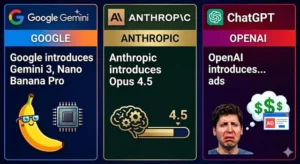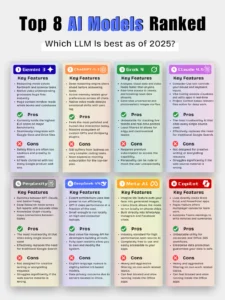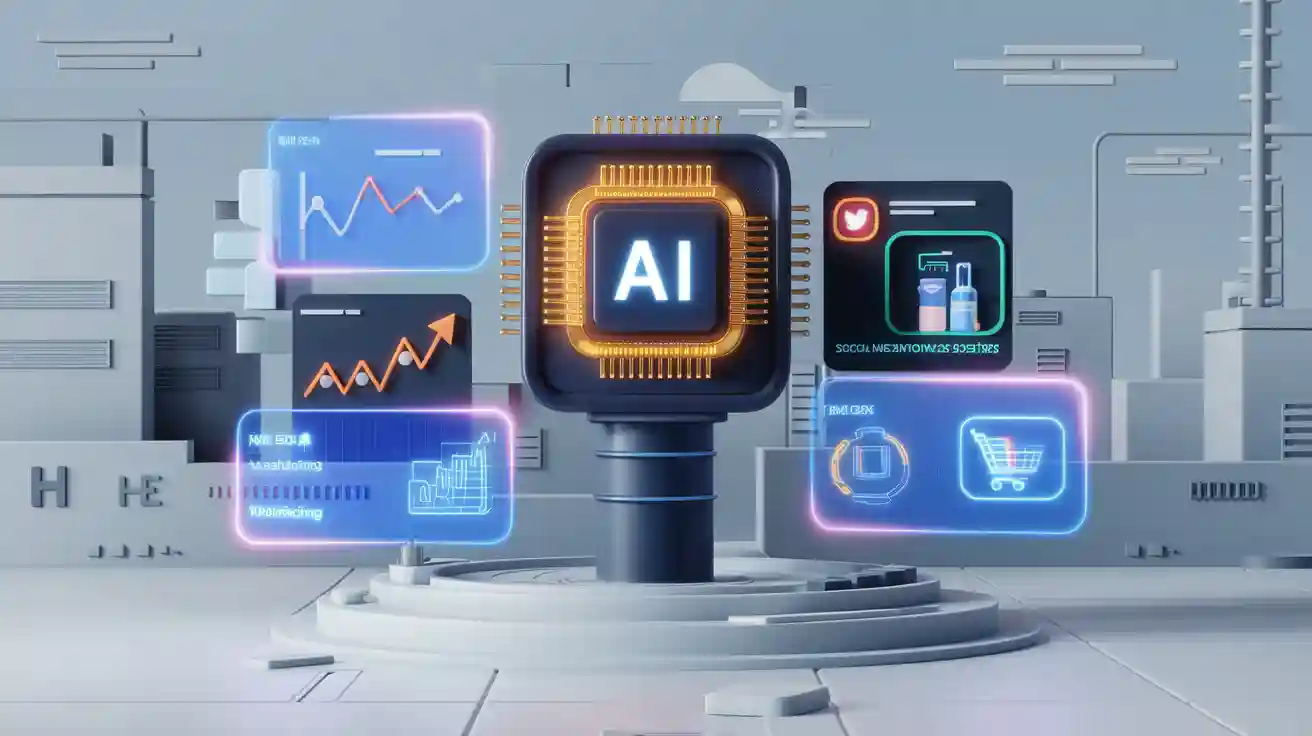
Artificial intelligence is reshaping the advertising world with remarkable results, particularly in the realm of AI ad campaigns. You can see businesses achieving incredible milestones: a 70% drop in cost per lead while doubling lead volume, or an 82% reduction in cost per acquisition over two years. AI in advertising empowers you to create campaigns that deliver personalized experiences, optimize budgets, and boost efficiency. By leveraging AI, you can craft innovative strategies that resonate with your audience and drive measurable success. Whether it's data-driven optimization or creative storytelling, AI ad campaigns unlock endless possibilities for advertisers.
Key Takeaways
-
AI helps ads feel more personal by matching people's likes.
-
AI tools make campaigns work better, saving money and boosting interest.
-
Big brands like Coca-Cola and Nike show AI makes ads creative and successful.
Coca-Cola’s AI Ad Campaign
Campaign Objective
Coca-Cola aimed to revolutionize its advertising strategy by leveraging AI to create personalized and engaging campaigns. The primary objectives included real-time performance analysis, delivering tailored advertisements, and maximizing return on investment. These goals were measured using key metrics such as engagement rates, click-through rates, and brand sentiment. For example, the “Taste the Feeling” campaign utilized AI to craft dynamic content that resonated with diverse markets. This approach allowed Coca-Cola to connect with audiences on a deeper level, ensuring that each interaction felt relevant and meaningful.
The “Share a Coke” campaign further demonstrated Coca-Cola's commitment to personalization. By using AI analytics, the company identified popular names and incorporated them into localized marketing efforts. This strategy not only delighted consumers but also drove tangible results, including a 2% increase in U.S. sales. Coca-Cola's focus on understanding consumer preferences and behaviors through AI set a new standard for targeted advertising.
|
Campaign Objectives |
Performance Goals |
|---|---|
|
Real-time performance analysis |
Engagement metrics |
|
Personalized advertising |
Click-through rates |
|
Maximizing return on investment |
Brand sentiment |
AI Technology Used
Coca-Cola employed advanced AI technologies to analyze vast amounts of consumer data and extract actionable insights. These tools enabled the company to understand customer preferences, predict trends, and optimize campaign performance in real time. AI-powered analytics played a crucial role in identifying patterns and tailoring content to specific audiences. For instance, the “Share a Coke” campaign used AI to pinpoint popular names, ensuring that the product felt personal and relatable to consumers.
Additionally, Coca-Cola utilized AI to enhance creativity in its campaigns. Machine learning algorithms helped generate dynamic content that adapted to different markets and cultural contexts. This innovative use of AI allowed Coca-Cola to maintain its position as a leader in the advertising world. By integrating AI into its strategies, Coca-Cola demonstrated how technology can drive both creativity and efficiency in marketing.
Nike’s AI-Powered Storytelling
Campaign Objective
Nike revolutionized storytelling by using AI to craft narratives that resonate deeply with its audience. The campaign aimed to create personalized experiences that inspire and engage. By analyzing consumer data, Nike identified unique audience segments and tailored its messaging to match their preferences. This approach allowed Nike to connect with customers on an emotional level, fostering brand loyalty and driving engagement.
The effectiveness of Nike’s AI-powered ad campaign can be measured through several performance metrics:
-
Engagement Metrics: Likes, shares, and comments reflect how well your audience connects with the story.
-
Brand Mentions and Sentiment Analysis: Social media and online discussions reveal the emotional tone associated with your brand.
-
Conversion Rates: Track whether your storytelling leads to desired actions, such as purchases or sign-ups.
-
Audience Reach and Impressions: Measure how far your narrative spreads across channels.
Nike’s focus on these metrics ensured its storytelling efforts delivered measurable results, strengthening its position as a leader in innovative advertising.
AI Technology Used
Nike implemented cutting-edge AI technologies to enhance its storytelling campaigns. AI algorithms analyzed consumer data to segment audiences based on preferences, enabling Nike to deliver tailored messages. Predictive campaign management tools optimized content and timing, ensuring maximum impact.
Dynamic content creation played a pivotal role in Nike’s strategy. AI generated personalized marketing materials across formats, ensuring relevance and timely delivery. For example, AI-powered tools helped Nike craft stories that aligned with individual customer interests, boosting engagement and campaign performance.
|
Benchmark |
Description |
Impact on Campaign Outcomes |
|---|---|---|
|
AI algorithms analyze consumer data to identify unique customer segments based on preferences. |
Tailored messaging enhances personal connection, leading to higher engagement levels. |
|
|
Predictive Campaign Management |
AI predicts campaign success by analyzing historical data, optimizing content and timing. |
Improved ROI by focusing on effective strategies, reducing waste, and maximizing marketing budget efficiency. |
|
Dynamic Content Creation |
AI generates personalized marketing content across various formats based on individual preferences. |
Ensures relevance and timely delivery of messages, boosting campaign performance and customer engagement. |
Nike’s use of AI demonstrates how technology can transform storytelling into a powerful tool for building connections and driving results.
Spotify’s AI Advertising Examples
Campaign Objective
Spotify uses AI to revolutionize how you experience music and advertising. The platform’s goal is to deliver personalized ads that resonate with listeners while driving measurable outcomes for advertisers. By analyzing listener behavior, Spotify crafts campaigns that align with individual preferences, ensuring ads feel relevant rather than intrusive.
For example, Spotify’s AI-powered campaigns focus on metrics like reach, impressions, and listener engagement. These metrics help advertisers understand how their content performs and how it impacts audience behavior. Spotify tracks listener demographics to refine targeting strategies, ensuring campaigns reach the right audience. Additionally, the platform monitors skip rates to gauge ad effectiveness. A skip rate below 30% indicates strong engagement, showing that listeners find the content appealing.
Spotify’s AI advertising examples demonstrate how technology can transform campaigns into meaningful experiences. Whether it’s increasing playlist additions or driving follower growth, Spotify’s approach ensures advertisers achieve tangible results while enhancing the listener experience.
|
Metric |
Description |
Example/Outcome |
|---|---|---|
|
Reach and Impressions |
Total unique listeners and total views of content. |
|
|
Stream Count and Growth Rate |
Direct listener engagement with music, tracking raw numbers and percentage increases. |
Consistent upward trends indicate healthy growth. |
|
Save Rate |
Percentage of listeners adding tracks to personal libraries. |
5-10% save rate indicates strong performance for newer artists. |
|
Playlist Additions |
Impact of editorial and user-generated playlists on visibility. |
Placement on a playlist with 50,000 followers generates sustainable growth. |
|
Cost Per Acquisition (CPA) |
Investment required to acquire each new listener or follower. |
Lower CPA rates indicate more efficient campaign performance. |
|
Ad Recall and Brand Awareness |
Effectiveness of ads in creating lasting impressions. |
Metrics gauge promotional content resonance beyond immediate streams. |
|
Conversion Metrics |
Website visits, merchandise sales, and ticket purchases from campaigns. |
Tools connect streaming activity to tangible business outcomes. |
|
Follower Growth |
New followers committed to long-term development. |
Monitor quantity and engagement rates with subsequent releases. |
|
Listener Demographics |
Analysis of audience characteristics for refined targeting. |
Identifies growth opportunities in specific markets. |
|
Skip Rate |
Percentage of listeners skipping tracks before completion. |
Skip rates below 30% indicate strong listener engagement. |
AI Technology Used
Spotify leverages AI to analyze vast amounts of listener data and optimize advertising strategies. AI algorithms track user behavior, including listening habits, playlist preferences, and skip rates. These insights allow Spotify to create personalized ads that match individual tastes.
Dynamic ad insertion is one of Spotify’s standout features. AI ensures ads are delivered at the right time, targeting listeners when they’re most likely to engage. Predictive analytics also play a key role, helping advertisers forecast campaign performance and adjust strategies for better results.
Spotify’s AI tools don’t just benefit advertisers; they enhance your listening experience. By tailoring ads to your preferences, Spotify ensures you hear content that feels relevant and engaging. This approach highlights how AI can balance personalization with efficiency, creating a win-win scenario for both listeners and advertisers.
McDonald’s AI-Driven Menu Personalization
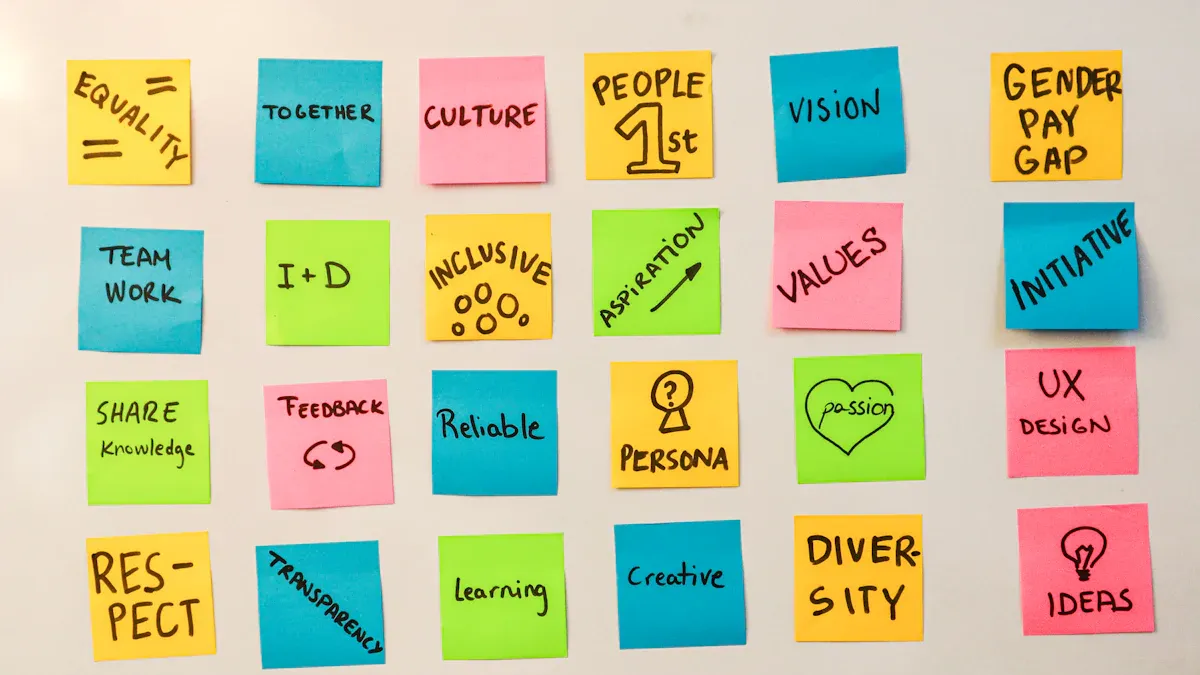
Campaign Objective
McDonald’s set out to transform the customer experience by using AI to personalize its menu offerings. The primary goal was to enhance customer satisfaction while driving business growth. By tailoring menu recommendations to individual preferences, McDonald’s aimed to increase engagement and loyalty. The company also focused on expanding its global presence and boosting sales through its loyalty program.
Here’s a breakdown of McDonald’s key objectives and numerical targets:
|
Objective/Target |
Description/Value |
|---|---|
|
Increase locations worldwide |
|
|
Active members of loyalty program by 2027 |
250 million active members |
|
Annual sales from loyalty program members |
$45 billion in yearly sales |
These ambitious goals highlight how McDonald’s leverages AI to align its menu personalization efforts with broader business strategies.
AI Technology Used
McDonald’s employs cutting-edge AI technologies to power its menu personalization. These include data analytics, machine learning, and dynamic personalization engines. AI analyzes customer data, such as purchase history and regional preferences, to recommend menu items that resonate with individual tastes.
The success of these technologies is evident in several performance indicators:
-
Increased customer engagement through tailored menu suggestions.
-
Higher conversion rates as personalized recommendations encourage more purchases.
-
Enhanced customer loyalty driven by a more satisfying dining experience.
For example, AI-powered dynamic personalization engines adjust menu displays in real time based on factors like weather, time of day, and local trends. This ensures that you always see options that feel relevant and appealing. By integrating AI into its operations, McDonald’s not only improves customer satisfaction but also achieves measurable business outcomes.
Sephora’s AI Virtual Try-On

Campaign Objective
Sephora’s AI Virtual Try-On campaign aimed to revolutionize how you shop for beauty products. The primary goal was to enhance your online and in-store experience by allowing you to visualize how products look on your skin before making a purchase. This innovative approach sought to increase engagement, boost sales, and improve customer satisfaction.
The campaign achieved remarkable results. Engagement skyrocketed by 200%, and the add-to-basket rate rose by 25%. Online conversions increased by 35%, while in-store users of AR mirrors saw a 30% boost in sales. Over 8.5 million visits to Sephora’s augmented reality (AR) experiences occurred within the first 18 months. Users of the virtual try-on tool also had 90% higher conversion rates compared to those who didn’t use it.
|
Metric |
Value |
|---|---|
|
Increase in online conversions |
35% |
|
Increase in sales for AR mirror users |
30% |
|
Visits to AR experiences |
8.5 million |
|
Higher conversion rates for virtual try-on users |
90% |
|
Increase in engagement |
200% |
|
Increase in add-to-basket rate |
25% |
Sephora’s focus on improving your shopping journey through AI-driven personalization has set a new standard in the beauty industry.
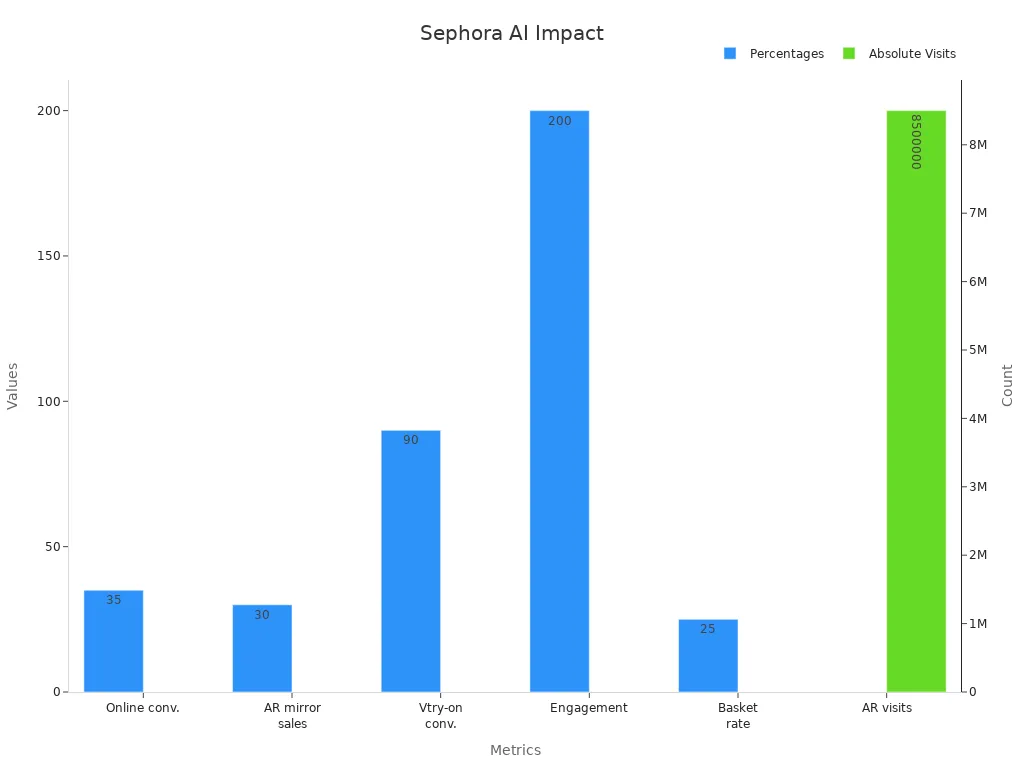
AI Technology Used
Sephora’s Virtual Try-On feature relies on advanced AI technologies to deliver a seamless and interactive experience. The system uses facial recognition and machine learning algorithms to map your facial features accurately. This ensures that the virtual application of makeup products looks realistic and aligns with your unique features.
AI also plays a critical role in analyzing user behavior. For instance, the add-to-cart rate increased by 11% after customers used the virtual try-on tool. Additionally, users spent 30% more time on product pages after engaging with the feature. These insights help Sephora refine its offerings and create a more engaging shopping experience for you.
The integration of AI into Sephora’s platform doesn’t just enhance your experience; it also drives business growth. By combining personalization with cutting-edge technology, Sephora has successfully bridged the gap between physical and digital shopping.
BMW’s AI Customer Engagement Campaign
Campaign Objective
BMW’s AI Customer Engagement Campaign aimed to redefine how you interact with the brand. The primary goal was to create personalized experiences that resonate emotionally while driving measurable outcomes. BMW focused on enhancing customer loyalty, increasing conversion rates, and fostering deeper connections through innovative use of ai.
The campaign centered on understanding your preferences and behaviors. By analyzing purchase history and engagement patterns, BMW tailored its messaging to align with your interests. This approach ensured that every interaction felt meaningful and relevant. For example, BMW used ai to craft unique digital experiences, such as personalized artwork inspired by your preferences. These efforts not only strengthened emotional resonance but also encouraged you to share your experiences, amplifying the campaign’s reach.
AI Technology Used
BMW leveraged cutting-edge ai technologies to achieve its campaign objectives. These tools analyzed customer data and created personalized content that resonated with you. Here’s a breakdown of the key technologies and their impact:
|
AI Technology |
Description |
Impact on Engagement Metrics |
|---|---|---|
|
Predictive Analytics |
Analyzes customer data, including purchase history and preferences. |
|
|
Generative AI |
Creates original artwork based on extensive art history. |
Enhanced emotional resonance and shareable experiences. |
Predictive analytics played a crucial role in understanding your preferences. By analyzing data, BMW identified patterns that helped optimize its messaging and offerings. This resulted in higher conversion rates and stronger loyalty. Generative ai added a creative dimension to the campaign. It produced original artwork that reflected your tastes, creating memorable and shareable moments.
BMW’s use of ai demonstrates how technology can transform customer engagement. By combining data-driven insights with creative innovation, BMW delivered a campaign that felt personal and impactful.
Heinz’s AI Ad Campaign
Campaign Objective
Heinz set out to refresh its brand image and engage you in a creative and interactive way. The campaign aimed to showcase the versatility of its ketchup while embracing cutting-edge technology. By leveraging AI, Heinz created innovative designs that captured attention and sparked conversations.
One of the campaign’s key goals was to involve you in the creative process. Heinz encouraged user-generated content, inviting you to share your own ideas and interpretations of the brand. This approach not only increased social media engagement but also fostered a sense of community among fans. Influencers played a significant role in amplifying the campaign’s reach, ensuring that Heinz remained relevant in a competitive market.
|
Success Criteria |
|
|---|---|
|
Refresh the brand’s image |
Creation of innovative AI-generated designs |
|
Engage consumers through user-generated content |
Increased social media engagement and influencer participation |
AI Technology Used
Heinz utilized advanced AI tools to bring its vision to life. The campaign prominently featured DALL-E 2, an AI model trained on countless images, to generate unique advertising visuals of Heinz ketchup bottles. These AI-generated designs combined creativity with technology, helping Heinz maintain its iconic status while appealing to a modern audience.
The results validated the effectiveness of this approach. The campaign won The Drum Awards for Social Media 2023, highlighting its success in blending AI with advertising. By using AI to create visually striking content, Heinz demonstrated how technology can elevate a brand’s storytelling and keep it relevant in the digital age.
|
AI Technology |
Description |
Outcome |
|---|---|---|
|
DALL-E 2 |
Used to create advertising images of Heinz ketchup bottles by training on numerous photos. |
Helped maintain brand relevance and won The Drum Awards for Social Media 2023. |
Heinz’s campaign shows how AI can transform traditional advertising into an engaging and innovative experience. By combining AI-generated visuals with user participation, Heinz created a campaign that resonated with you and left a lasting impression.
Netflix’s AI Chatbot Campaign
Campaign Objective
Netflix wanted to enhance your experience by introducing an AI-powered chatbot. The goal was to make your interactions with the platform more engaging and personalized. The chatbot aimed to help you discover new shows and movies based on your preferences. It also provided instant answers to your questions about content availability, genres, and recommendations.
Netflix focused on improving customer satisfaction and retention. By using AI, the chatbot could analyze your viewing habits and suggest content tailored to your tastes. For example, if you enjoy thrillers, the chatbot might recommend trending suspenseful series or hidden gems. This approach ensured that you spent less time searching and more time enjoying content.
The campaign also aimed to reduce customer service response times. The AI chatbot handled common queries efficiently, freeing up human agents to address complex issues. This strategy improved overall support quality while keeping you engaged with the platform. Netflix’s focus on personalization and efficiency demonstrated how AI could transform your streaming experience.
AI Technology Used
Netflix’s chatbot relied on advanced AI technologies to deliver a seamless experience. Natural language processing (NLP) allowed the chatbot to understand your questions and respond conversationally. Machine learning algorithms analyzed your viewing history to predict what you might enjoy next.
The chatbot also used sentiment analysis to gauge your reactions to recommendations. If you disliked a suggestion, the AI adjusted its approach to better match your preferences. This continuous learning process ensured that the chatbot became smarter over time.
Netflix integrated AI into its chatbot to make your interactions feel natural and intuitive. The technology didn’t just improve recommendations; it also enhanced customer support. By combining NLP, machine learning, and sentiment analysis, Netflix created a tool that elevated your streaming experience.
Nutella’s AI Personalization Campaign
Campaign Objective
Nutella wanted to create a deeper connection with you by making its packaging more personal and engaging. The campaign aimed to let you design your own Nutella jar labels using AI. This approach encouraged creativity and gave you a sense of ownership over the product. By involving you in the design process, Nutella hoped to increase brand loyalty and spark conversations around its products.
The campaign achieved remarkable results. Nutella’s AI system generated 7 million unique labels, showcasing the power of AI in creating personalized content. This effort significantly boosted user engagement. Positive feedback from consumers highlighted how much they enjoyed the interactive experience. The campaign also fostered a strong community around user-generated content, reflecting its success in driving meaningful consumer interaction.
AI Technology Used
Nutella used advanced AI tools to make this campaign possible. The AI system analyzed design elements and combined them in unique ways to create millions of label variations. This ensured that each label felt special and tailored to your preferences. The technology also allowed you to participate in the creative process by customizing your own designs.
AI played a critical role in scaling the campaign. It enabled Nutella to handle a massive volume of requests without compromising quality. The system’s ability to generate unique designs quickly and efficiently made the campaign a standout example of how AI can enhance personalization. By integrating AI into its marketing strategy, Nutella demonstrated how technology can transform a simple product into a memorable experience for you.
KitKat’s AI Advertising Examples
Campaign Objective
KitKat wanted to create a campaign that would resonate with you on a personal level. The goal was to use ai to craft advertisements that felt fresh, engaging, and relevant. KitKat aimed to connect with younger audiences while maintaining its iconic brand identity. The campaign focused on increasing brand awareness and driving social media engagement.
One of the standout objectives was to involve you in the creative process. KitKat encouraged you to interact with its ads by generating your own taglines and designs. This approach made you feel like a part of the brand’s story. The campaign also sought to boost sales by creating a stronger emotional connection with its audience.
AI Technology Used
KitKat used ai to power its innovative advertising campaign. The brand employed machine learning algorithms to analyze consumer preferences and trends. This allowed KitKat to create ads that matched your interests and tastes. For example, ai tools helped generate personalized taglines based on popular cultural references.
KitKat also used generative ai to design unique visuals for its ads. These visuals adapted to different platforms, ensuring they looked appealing whether you saw them on social media or a billboard. Predictive analytics played a key role in optimizing ad placement. By analyzing data, KitKat ensured its ads reached you at the right time and place.
The campaign demonstrated how ai can transform traditional advertising into a dynamic and interactive experience. KitKat’s use of technology made its ads more engaging and relevant, leaving a lasting impression on its audience.
AI has transformed advertising by enhancing creativity, personalization, and customer engagement. You’ve seen how brands like Coca-Cola and Spotify use AI to craft impactful campaigns.
|
Statistic |
Description |
|---|---|
|
1 |
|
|
2 |
Organizations using AI see dramatic gains in efficiency. |
|
3 |
Consumer engagement increases with AI-driven campaigns. |
Explore AI tools to elevate your strategies and achieve remarkable results.
FAQ
What are the main benefits of using AI in advertising?
AI helps you personalize campaigns, optimize budgets, and analyze data faster. It improves engagement, enhances creativity, and ensures better targeting for your audience.
How does AI improve ad personalization?
AI analyzes user data, such as preferences and behavior, to create tailored ads. This ensures your audience sees content that resonates with their interests.
Tip: Use AI tools like predictive analytics to refine your targeting strategies and boost campaign performance.
Is AI suitable for small businesses in advertising?
Yes, AI tools like chatbots and analytics platforms are affordable and scalable. They help you compete by improving efficiency and delivering personalized customer experiences.

